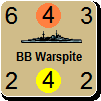ORIGINAL: armouredcarriers
The problem with such 'bun-fights' is that they're usually based on commonly propagated factually incorrect information (Slade and Worth's essays at Navweaps for example - and it's not entirely their fault: They used published books that copied each other's mistakes for the basis of their conclusions)
The bulk of such fights is based on speculation - which is largely pointless.
To remove some of that speculation, I am building my site. People can read it and make up their own minds.
The rest is just flag waving. I'm not from the UK or US. So that doesn't interest me much.
The fact is the only point of direct comparison is the Pacific as the RN armoured carriers fought there alongside the USN carriers.
The USN fleet carriers did not participate in actual fighting in the Arctic, North Atlantic or Mediterranean.
So their performance under those unique conditions can only be speculation.
IMHO each navy built the right ship for the job they needed them to do.
Those jobs happened to be very different.
And their war records demonstrate this.
warspite1
I 100% agree on the 'bun-fight' aspect. Sure, most(?) people have a pride in their country and take a degree of comfort in knowing that they were the best, fastest, strongest or whatever - or at least weren't the 'bad guys'. And that can be fine to a point - so long as it doesn't blind people to the truth, stop them being objective and get in the way of a rounded understanding.
Personally, I am not a very technically minded person. The technical details of British armoured carriers vs USN non-armoured is interesting to me - only to a point, the minutiae I can live without.
Of far more interest - and this is where this thread came in - is the understanding of the development of carriers (not just the armoured type) and their aircraft and the roles expected of them in each navy. This interest stems from looking at the carrier forces engaged at Midway in 1942 (by both sides) and the use of British carriers in the Mediterranean from 1940. Two years apart - Calabria to Midway - but seemingly a world away in terms of hardware and operating procedures (doctrine).
Its only when looking at the big picture - the economies, the world position, the onset of war in 1939 - does the story even begin to make sense. And like just about everything in World War II, the subject is fascinating.











 " - BBfanboy
" - BBfanboy